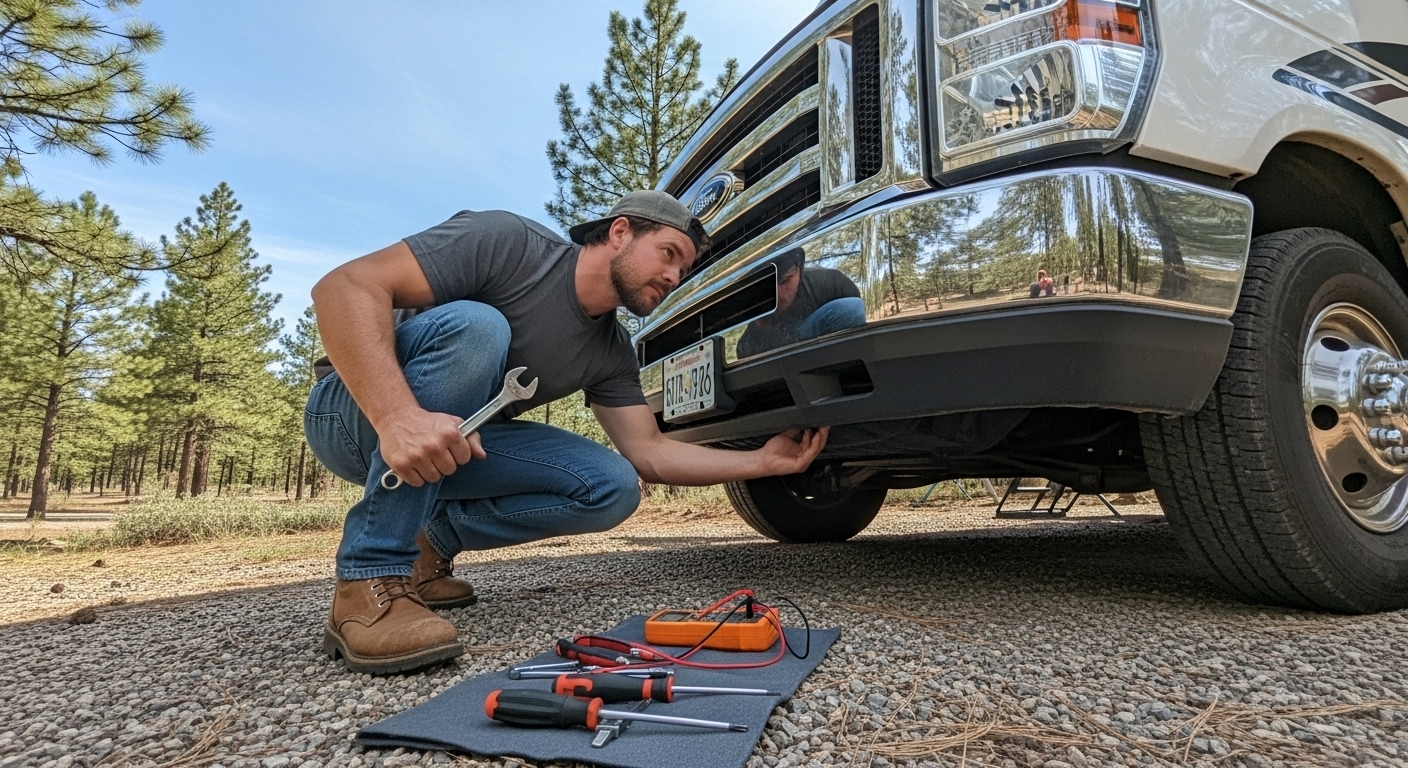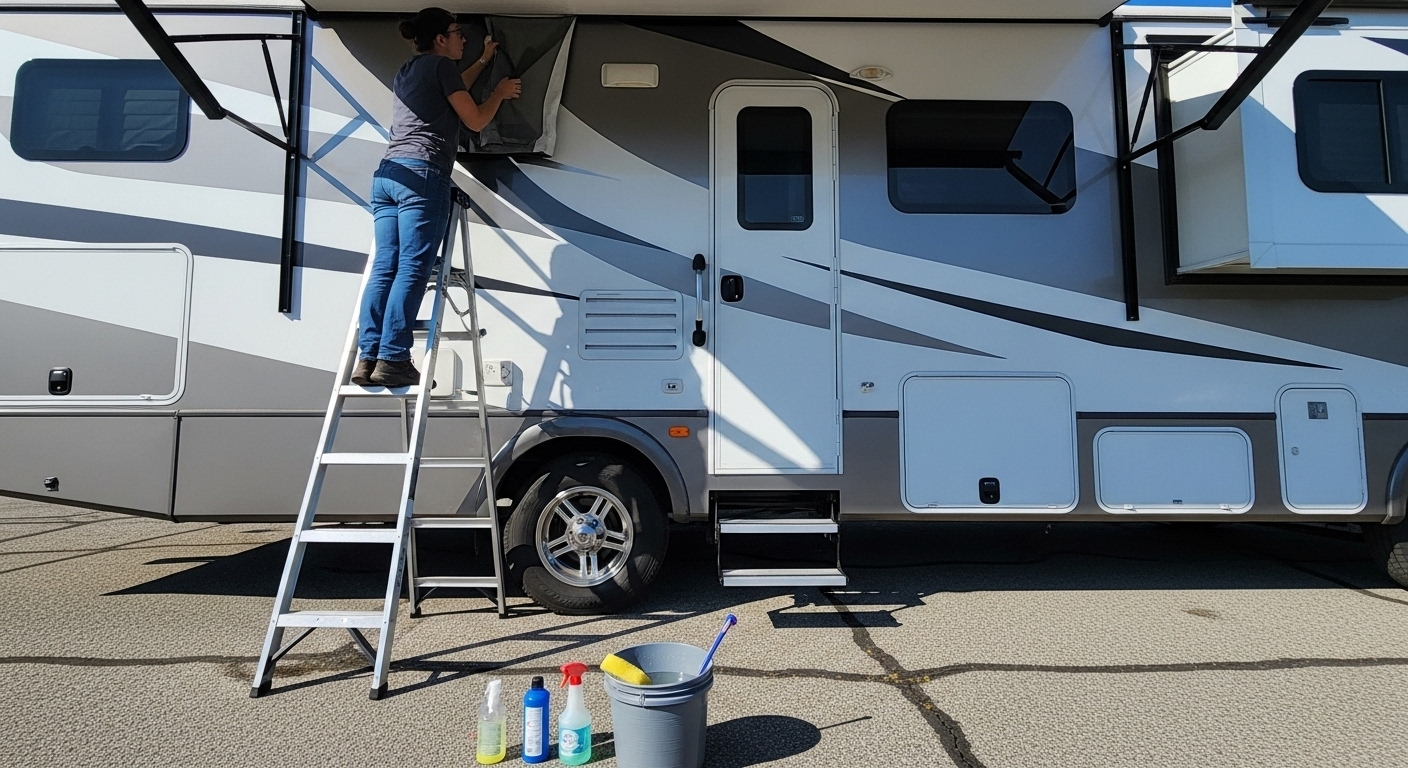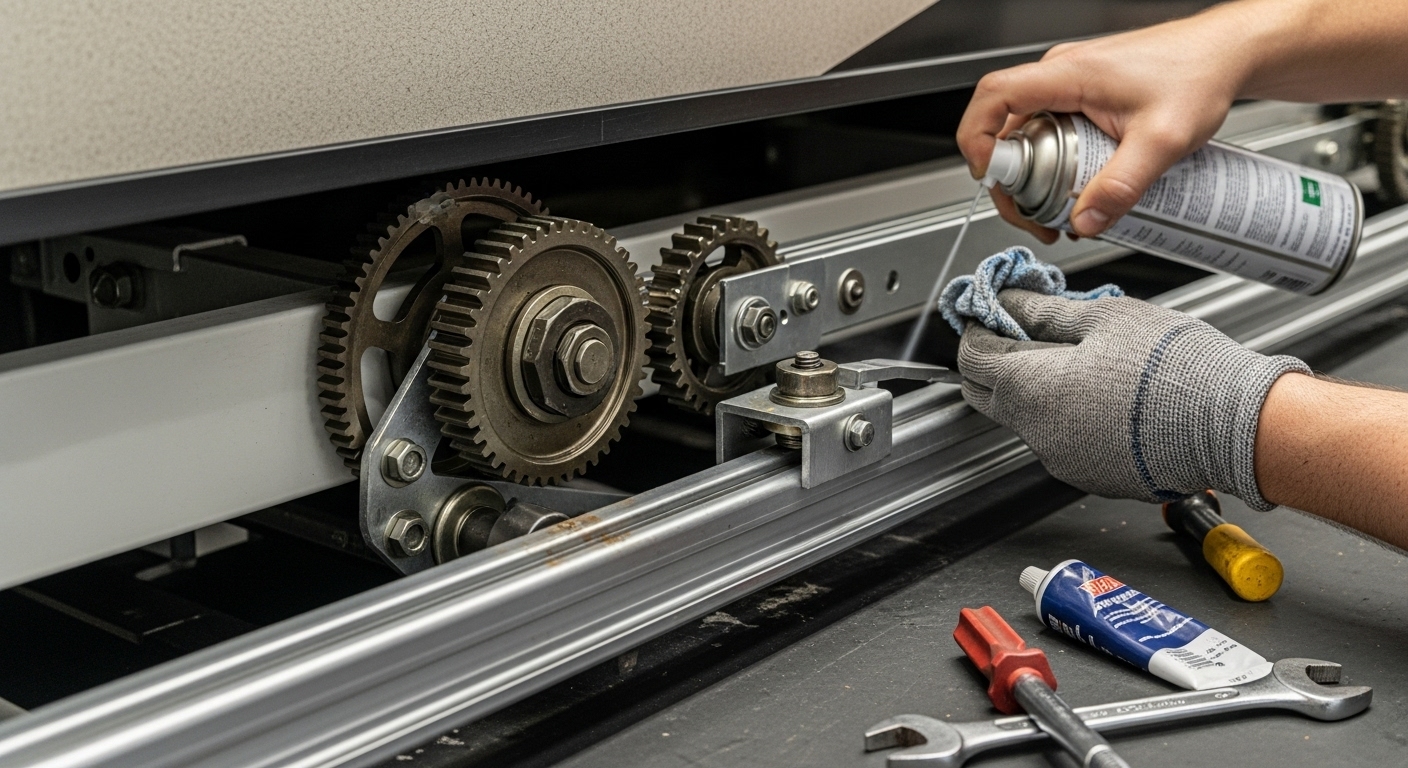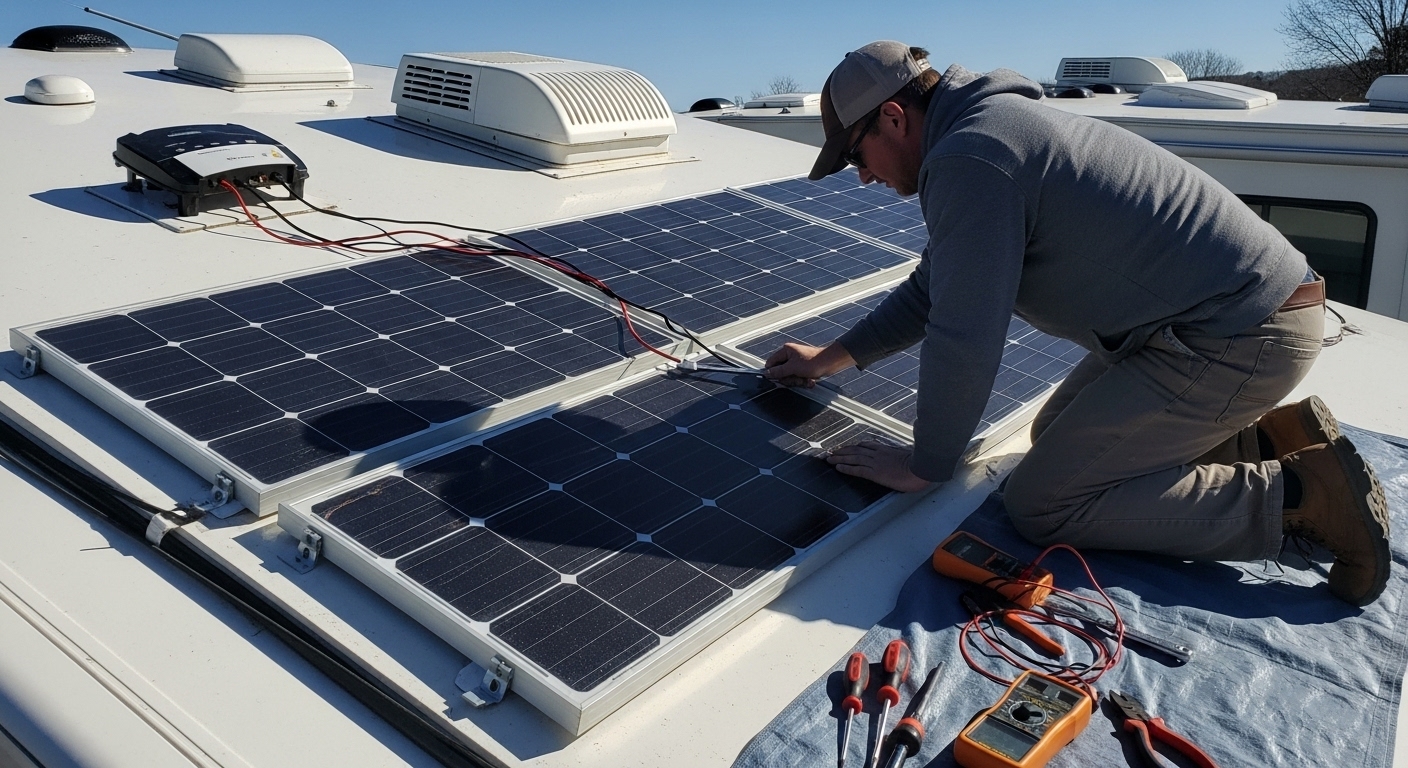
RV Maintenance Checklist: Essential Repairs You Can Do Yourself
Regular maintenance is crucial for keeping your RV in top condition and avoiding costly repairs down the road. While some tasks require professional expertise, many routine maintenance jobs are well within the capabilities of the average RV owner. This comprehensive guide will walk you through essential DIY maintenance tasks that will save you money and keep your home-on-wheels running smoothly.
Why DIY RV Maintenance Matters
Learning to perform basic RV maintenance offers several advantages beyond cost savings. Understanding your RV's systems gives you confidence to handle issues on the road, reduces dependence on service centers (which can be scarce in remote areas), and helps you catch small problems before they become major repairs. Additionally, regular maintenance protects your investment and ensures safety for you and your passengers.

Monthly Maintenance Tasks
Check Tire Pressure and Condition
Proper tire pressure is critical for safety and fuel efficiency. Check all tires (including spares) when cold, using a quality tire pressure gauge. Inspect for cracks, bulges, or uneven wear. Most RV tires need replacement every 5-7 years, regardless of tread depth, due to sidewall degradation from UV exposure and ozone.
What You Need: Tire pressure gauge, tire inflator, tire shine protectant
Inspect Roof and Seals
Water damage is the number one enemy of RVs. Inspect your roof monthly for cracks, bubbles, or deterioration in the roofing material. Check all roof penetrations (vents, air conditioners, antennas) for seal integrity. Clean the roof and reapply sealant as needed.
What You Need: Ladder, roof cleaner, appropriate sealant (dicor for EPDM roofs, self-leveling sealant for others)
Test Smoke and CO Detectors
Safety devices save lives. Test all smoke and carbon monoxide detectors monthly using their test buttons. Replace batteries annually or as needed. Most detectors have a lifespan of 5-10 years and should be replaced accordingly.
Check Propane System
Inspect visible propane lines for cracks or damage. Perform a leak test by brushing soapy water on connections—bubbles indicate leaks. Ensure the propane detector inside your RV is functioning properly.
What You Need: Spray bottle with soapy water, flashlight
Quarterly Maintenance Tasks
Service Battery Bank
For lead-acid batteries, check water levels and top off with distilled water as needed. Clean terminals with a wire brush and baking soda solution to prevent corrosion. Test voltage and capacity. For lithium batteries, verify connections and check the battery management system.
What You Need: Multimeter, battery hydrometer, distilled water, wire brush, protective gloves and eyewear
Lubricate Slide-Outs
Keep slide-out mechanisms running smoothly by cleaning tracks and applying appropriate lubricant. Use dry lubricant for slide toppers and rails to prevent dust accumulation. Check for proper alignment and listen for unusual noises during operation.
What You Need: Slide-out lubricant, dry lubricant spray, clean rags

Clean and Treat Water System
Sanitize your fresh water system quarterly using a bleach solution (1/4 cup bleach per 15 gallons of water). Run the solution through all faucets, let sit for 12 hours, then flush thoroughly. Replace water filters and check the water heater anode rod.
What You Need: Bleach, water filter cartridges, socket wrench for anode rod
Inspect and Clean Air Conditioner
Remove and clean AC filters, clear drain pans, and check for refrigerant leaks. Clean the exterior fins with a soft brush and gentle spray to maintain efficiency. Ensure the unit is level for proper drainage.
Semi-Annual Maintenance Tasks
Service Wheel Bearings
Wheel bearing maintenance prevents catastrophic failures. Remove wheels, inspect bearings for wear or damage, clean thoroughly, and repack with fresh grease. This job requires some mechanical skill but can save thousands in roadside repairs.
What You Need: Jack stands, wheel chocks, bearing grease, grease seals, torque wrench
Inspect Brakes
Check brake pads and shoes for wear, inspect brake lines for leaks or damage, and test brake controller function. For electric brakes, verify magnet condition and adjust as needed. Don't postpone brake work—it's a critical safety system.
Change Generator Oil and Filter
Generators require regular oil changes based on hours of use (typically every 50-100 hours). Change the oil filter, air filter, and spark plugs according to manufacturer specifications. Run the generator under load monthly to prevent carburetor issues.
What You Need: Oil and filters specific to your generator model, oil drain pan, funnel
Inspect Awning
Clean the awning fabric with appropriate cleaner, inspect the roller tube and arms for damage, and lubricate moving parts. Check tension adjustment and verify that the awning retracts properly. Address any tears or damage promptly to prevent water intrusion.
Annual Maintenance Tasks
Complete Exterior Wash and Wax
A thorough annual detailing protects your RV's finish from UV damage and oxidation. Use RV-specific wash and wax products. Pay special attention to decals and graphics, using protective products designed for them.
Inspect and Service Furnace
Clean the furnace burner assembly, vacuum dust from the blower compartment, and verify proper ignition and operation. Check the exhaust vent for obstructions. This job often requires removing access panels but is manageable for most DIYers.
Flush and Descale Water Heater
Sediment buildup reduces water heater efficiency and longevity. Drain the tank, remove the anode rod, and flush with a descaling solution if hard water deposits are present. Replace the anode rod if it's significantly corroded.
Inspect Chassis Components
Check shocks, springs, and suspension components for wear or damage. Inspect the frame for cracks or rust. Lubricate leveling jacks and stabilizers. This inspection is best done at a facility with a lift or inspection pit.
Essential Tools for DIY RV Maintenance
Building a basic RV maintenance toolkit will prepare you for most routine tasks:
- Quality multimeter for electrical diagnostics
- Socket set and wrenches (metric and SAE)
- Screwdriver set (flathead and Phillips)
- Tire pressure gauge and inflator
- Water pressure regulator and hose
- Sealants appropriate for your RV type
- Lubricants (silicone, dry lube, grease)
- Jack stands and wheel chocks
- Inspection mirror and flashlight
- Level for checking appliances and chassis
When to Call a Professional
While DIY maintenance handles most routine tasks, some jobs require professional expertise:
- AC refrigerant service
- Structural repairs
- Major electrical work
- Transmission service
- Complex engine repairs
- Slideout mechanism replacement
Attempting repairs beyond your skill level can result in expensive mistakes or safety hazards. When in doubt, consult a certified RV technician.
Creating Your Maintenance Schedule
Use a digital calendar or maintenance log to track completed tasks and schedule upcoming work. Many RVers use apps like RV Maintenance or simple spreadsheets. Record dates, mileage, and any observations about your RV's condition. This documentation proves valuable when selling your RV and helps identify patterns or recurring issues.
Regular maintenance might seem tedious, but it's far less stressful and expensive than emergency repairs. By developing good maintenance habits and tackling repairs yourself when appropriate, you'll keep your RV road-ready and extend its lifespan significantly. Your future self will thank you for the time and effort invested in proper RV care!
